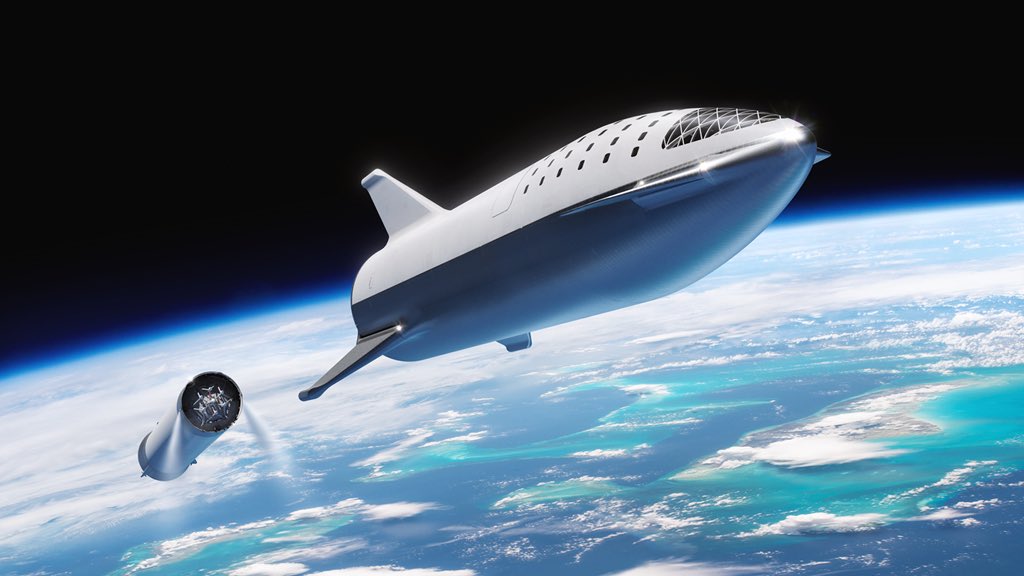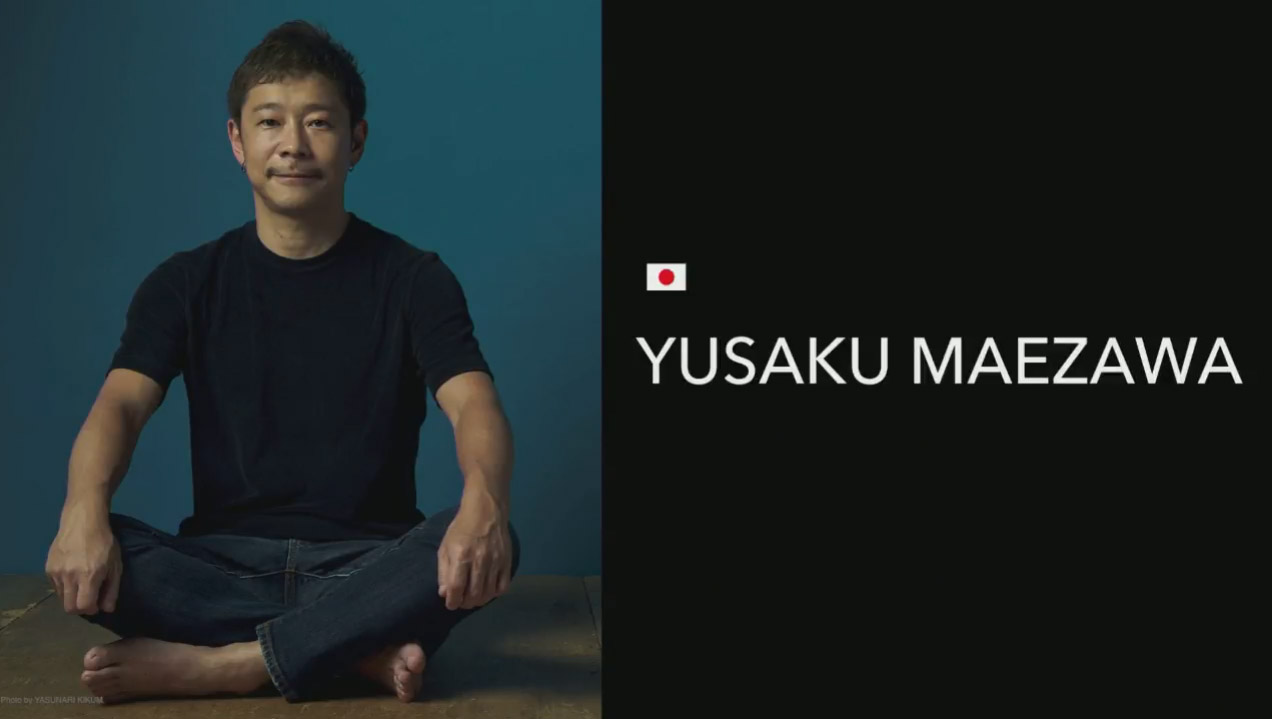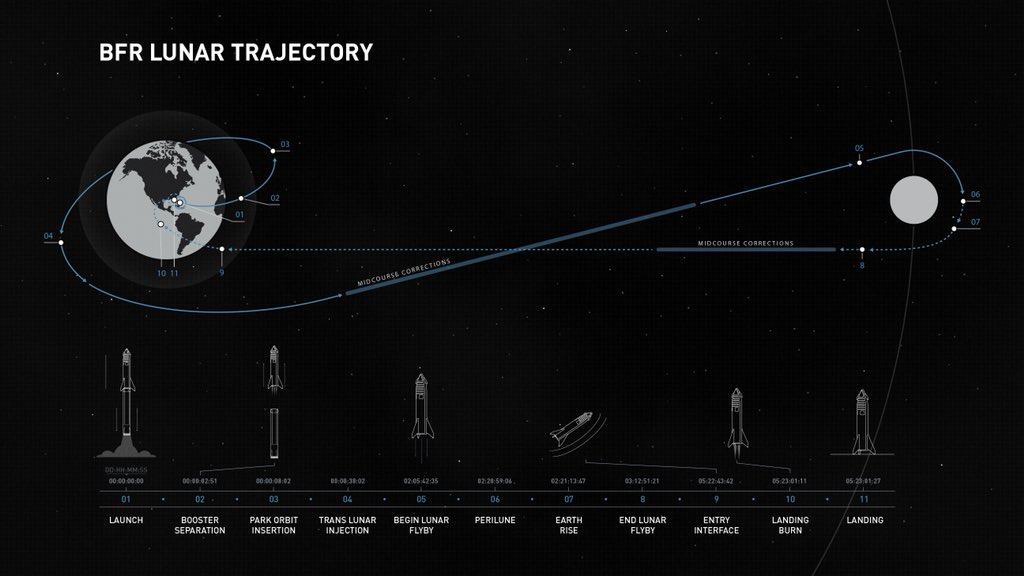SpaceX Will Fly a Japanese Billionaire (and Artists, Too!) Around the Moon in 2023
A Japanese billionaire and a coterie of artists will visit the moon as early as 2023, becoming the first private citizens ever to fly beyond low Earth orbit, SpaceX CEO Elon Musk announced tonight.
Yusaku Maezawa, the founder of Japanese e-commerce giant Zozo, has signed up to fly a round-the-moon mission aboard SpaceX's BFR spaceship-rocket combo, he and SpaceX CEO Elon Musk announced during a webcast tonight (Sept. 17) from the company's rocket factory in Hawthorne, California.
The mission — which will loop around, but not land on, the moon — could be ready to launch in just five years, Musk said. [The BFR in Images: SpaceX's Giant Spaceship for Mars & Beyond]
"Ever since I was a kid, I have loved the moon," Maezawa said. "Just staring at the moon fueled my imagination; it's always there and has continued to inspire humanity. That is why I do not pass up this opportunity to see the moon up close."
Maezawa won't go alone. He said he will choose six to eight artists, from painters and sculptors to fashion designers and architects, to share the experience with him — and, ultimately, with all of us. The artwork that results from this weeklong "#dearMoon" mission "will inspire the dreamer inside all of us," said Maezawa, who is an avid art collector. He's launched a website (https://dearmoon.earth/) just for the project.

Maezawa has also invited Musk to come along, and the SpaceX chief didn't exactly shoot down the possibility: "Maybe we'll both be on it," Musk said.
Neither Musk nor Maezawa would disclose how much the flight costs. But both said that Maezawa has already made a substantial down payment, and that he's buying the entire flight (meaning the artists will fly for free).
Get the Space.com Newsletter
Breaking space news, the latest updates on rocket launches, skywatching events and more!
Musk stressed that the mission, whose details still need to be worked out, will be dangerous. He commended Maezawa for his bravery.
"This is no walk in the park," Musk said. "When you're pushing the frontier, it's not a sure thing."

SpaceX is developing the BFR — which stands for Big Falcon Rocket, or Big F------ Rocket — primarily to help humanity settle Mars and other worlds throughout the solar system. After all, Musk has long maintained that helping make humanity a multiplanet species is the main reason he established SpaceX back in 2002. (The BFR will also do a lot of other work. SpaceX foresees the vehicle eventually shouldering all of the company's loads, from launching satellites, to cleaning up space junk, to carrying passengers on superfast "point-to-point" trips here on Earth.) [How SpaceX's 1st Passenger Flight Around the Moon Will Work]
Musk estimated that it'll ultimately cost about $5 billion to get the BFR up and running. And he thanked Maezawa for providing a key piece of funding toward that end.
"This has done a lot to restore my faith in humanity — that somebody's willing to do this," Musk said. "He is ultimately helping to pay for the average citizen to be able to travel to other planets. It's a great thing."
The SpaceX CEO also provided an update about the BFR design during tonight's event. For example, the reusable rocket-spaceship duo will be taller than previously stated — 387 feet (118 meters), compared with the 348 feet (106 m) that Musk cited during his September 2017 overview of the vehicle.
And the new BFR spaceship will feature three rear fins that also serve as landing pads, as well as two fins near its nose. The previous spaceship iteration sported just two finlike "delta wings" in the back. (The new ship's two front fins, and two of the three rear ones, will "actuate," serving like small wings, Musk said. And the third rear one isn't really a fin at all; it's a landing leg dressed up as a fin for symmetry purposes.)

The BFR spaceship can fit about 100 people, but the "Dear Moon" trip will carry just a skeleton crew to accommodate extra fuel, food, water and spare parts, as a precaution in case something goes wrong, Musk said.
The 2023 launch date is not set in stone, he stressed. SpaceX aims to perform short "hopper tests" next year and high-altitude, high-velocity flights in 2020. If those tests go well, the first flight to Earth orbit could occur two to three years from now, Musk said. And SpaceX will perform a number of uncrewed test flights before putting Maezawa and the artists on board.
This is not Maezawa's first experience booking a moon flight with SpaceX.
The Japanese entrepreneur was also the person who booked a circumlunar flight using SpaceX's Dragon capsule and Falcon Heavy rocket, Musk announced tonight. That mission, which SpaceX announced in February 2017, was to carry two people — presumably Maezawa and one artist — and launch by the end of 2018.
While humanity has maintained a continuous presence aboard the International Space Station since November 2000, no person has ventured beyond Earth orbit since the Apollo 17 moon mission ended in December 1972.
NASA also aims to launch astronauts around the moon at about the same time that SpaceX does. The space agency's Exploration Mission-2, the first crewed test flight of its Orion capsule and Space Launch System rocket, is currently scheduled to lift off on a three-week circumlunar mission in 2023.
Editor's note: This story was updated on Sept. 20 to state that just two of the three rear BFR spaceship fins actuate. The original version incorrectly stated that all three rear fins are actuated.
Follow Mike Wall on Twitter @michaeldwall and Google+. Follow us @Spacedotcom, Facebook or Google+. Originally published on Space.com.
Join our Space Forums to keep talking space on the latest missions, night sky and more! And if you have a news tip, correction or comment, let us know at: community@space.com.

Michael Wall is a Senior Space Writer with Space.com and joined the team in 2010. He primarily covers exoplanets, spaceflight and military space, but has been known to dabble in the space art beat. His book about the search for alien life, "Out There," was published on Nov. 13, 2018. Before becoming a science writer, Michael worked as a herpetologist and wildlife biologist. He has a Ph.D. in evolutionary biology from the University of Sydney, Australia, a bachelor's degree from the University of Arizona, and a graduate certificate in science writing from the University of California, Santa Cruz. To find out what his latest project is, you can follow Michael on Twitter.









